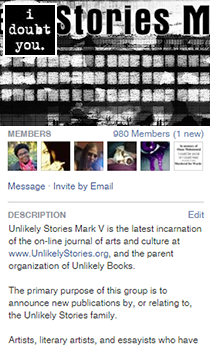On reading GennaRose Nethercott's "The Lumberjack's Dove"
In the magnetism and kinetic heat of life, a hand extends the virtue of a face. As a symbol, a hand becomes a want, a yearn, a chain, a command, a judgment, a labor, a seizure of sharing, affection, and property. The hand, the biological equivalent to the symbol of gesture, the means of participating in the play of life, the gesture.
“There are 3 rules of story telling:
1.Only tell a story if you have to…
2.Don’t think the characters cannot see you…
3. The purest way to speak the truth is by lying…”
The Lumberjack’s Dove delves into a common nervous syndrome and joke (forgetting one’s right hand) into a tale or a reason to tell tales. In the body, there is a natural right-side bias because of the heavier right side by virtue of organ position (liver-pancreas opposed to stomach dynamic). The discomfort that results from this balance is interestingly labeled into syndromes with no real cures: the anterior scalene syndrome, the pectoralis minor syndrome, the thoracic outlet syndrome, the triangular interval syndrome, all four being impingements of the veina cava, aorta and surrounding nerves (The opening pictures on copies of Grey’s Anatomy usually illustrate where this tends to happen). The resulting lack of oxygen and nervous feedback via nerve and neuron makes zombies out of us, and these could be a few of many other possible syndromes that our habits create. GennaRose Nethercott found a more interesting label and way to talk about what we can agree is and simplify as the before and after work syndrome: she called it The Lumberjack’s Dove.
These common syndromes which have us innocently or perversely twisting and turning for remedies become reasons to make we lumberjacks seek doctors, or witchdoctors, adventures out of the mundane: the fuck it syndrome, when pleasure or a quest for meaning justify wasted time from the valid reason of physical discomfort. The syndrome becomes the image for one’s own pain, and also the fairy dust of stories, even dreams, the coiled snake around your shoulder you can’t get rid of could tempt your beloved with an apple into curiosity, could tempt your spite into seeing a doctor or witch doctor, could tempt you to find what hasn’t been found.
“It’s the same old story:
A lumberjack loses a hand to his own axe. The hand becomes a dove. The hand tries to fly away but the lumberjack catches it beneath his shoe…
There are three rules of storytelling:
1.Be careful what stories you tell.
2.All stories told will manifest and become real.
3.Sometimes a story doesn’t make sense. Sometimes it
will contradict itself but be true anyway.”
Our unease makes fabulous actors and creators of us. A doctor’s visit on a pulled hamstring becomes a reason to walk more slowly, a broken rib, a reason to change the way one sleeps. Sudden changes in the body become vestibular conundrums and reasons to hide our vulnerabilities, the sad truth of our forced shame, where new dissociations and dislocations will prompt new rehearsals and lies, but also new angles at which to look at oneself and life if we are genuine. We have to look good outside to ourselves; we can’t let our peers hurt us in the mirror of these symptomatic syndromes. We make up stories for this; and it’s more fun this way.
“Lumberjack starts his pickup truck. He keeps the windows closed as he drives and the dove floats up to bounce against the glass, the road, is slick with rain. Worms bail up from the earth. Now there is a shirt tied around the wound, the fabric growing sticky and dark with ache. A bootlace becomes a tourniquet… Lumberjack drives towards the witch doctors or he drives to the ER depending on who’s telling the story and depending on if the story teller is a liar…”
No one’s tales are immaculate, such a claim would be laughable, but art exists as creative expression and endeavor and as a cultivated pleasure from the artist’s guts, a place, beyond judgment, a place against the first draft, beyond mere coincidence where one can find a personal meaning in the experiment of life. Make a craft of this endeavor, make the light look different, make allies, make enemies, scales and degrees, certainties and dualities, ebbs and flows that will become like property, like a sense of self. The world anew mirrors the chapter.
“There is only one other patient in the waiting room. She is mostly bald… her head catches light like a new sun. The hair in her lap smolders like underbrush burned to clear a worksite. She’s beautiful. She looks like she was just born, but not for the first time.”
The lumberjack, doved, loses more than a hand, he loses his right, his voice, his appearance, the evidence of his love, the claim to it. If he doves with language, curiosity and heart, the lumberjack becomes a poet; if not, a brute, a buffoon or a cynic.
“Here, read an old issue of Highlights magazine. Read women’s day. 60 ways to bake a quiche. 55 new ab workouts. 4 ways to live forever. You will live forever.
You will live forever.”
The value of a life becomes more apparent after an accident, the awareness of death, and prior results come with the knowledge of the danger of quick solutions. How will you heel or what will you do with the witch doctor’s egg now that your left hand is missing? How deep and satisfying is a grave?
“There are three rules of story telling:
1.Stories don’t care about your prior appointments. They
Make their own schedule. They are not service minded.
If a story doesn’t make you wait, it isn’t worth a damn.
3.Never ask a story for answers, or it will swallow you alive
in punishment.”
but also
“1.All stories end with a beginning.
2.Every character is a shapeshifter. Every object is a seed.
3.The purest way to speak the truth is by lying.
Lumberjack digs a hole at trunk’s box, three inches wide and 6 inches deep.
Then he cares for the egg the only way he knows: He plants it.”
Poems and stories drive us to unknown roads in ways that sound like music, like the light can be ours like a love or child, disciplined or bottled, in ways that counter syndromes and turn them into pet doves. GennaRose Nethercott’s book advertises its title.

Darryl / Dadou / Baron Wawa is a Port-au-Prince born Haitian-American who studied Photography and Creative Writing. He enjoys chocolate and good books. That said, maybe a movie is a good book. He loves to work with images and words and their pairing.


